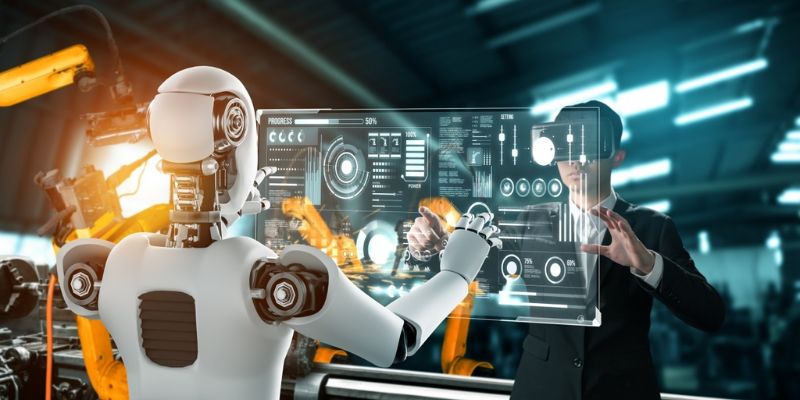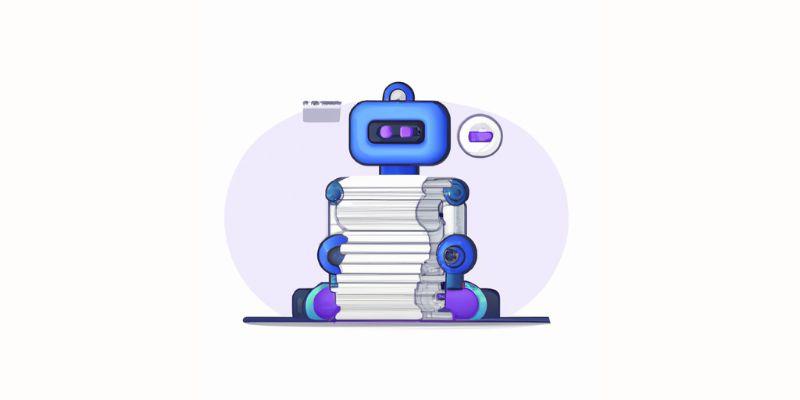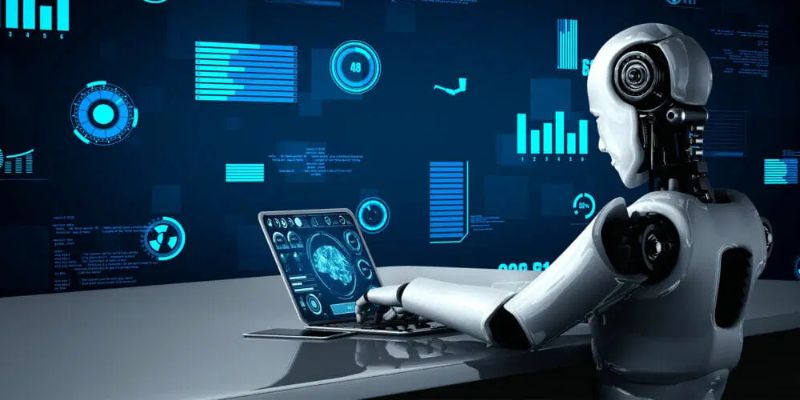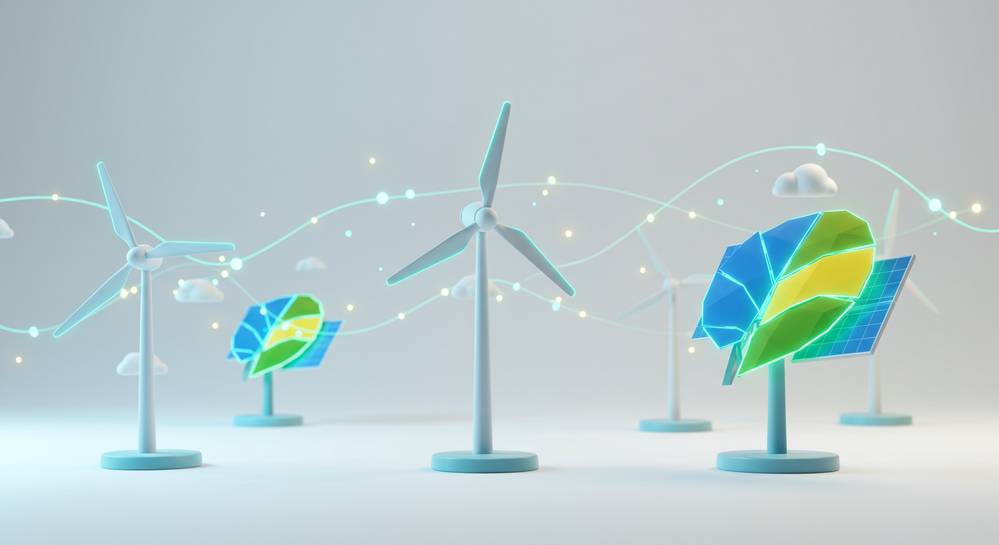The Rise of Human-Robot Collaboration: Future Workplace Unveiled
Imagine walking into a workspace where humans and robots team up like old pals, sharing tasks with ease. This isn’t the start of a sci-fi flick; it’s the real deal today. The rise of human-robot collaboration is shaking up industries, offering a peek into the future. I’ve been behind the scenes, hands-on with these machines, learning just how they’re becoming our new co-workers. From smarter, safer ways we work side by side, to the nifty ways they learn our moves – it’s a game-changer. Prepare to dive into a world where your next teammate might just be made of wires and steel.
Understanding the Essentials of Human-Robot Interaction
The evolving role of cobots in modern manufacturing
Cobots are changing how we work. They are robots that work right next to humans. Unlike older robots, cobots are safe pals on the factory floor. They handle boring or risky tasks so we can do more complex work. This team-up is not just about getting more done; it makes jobs easier and safer. Now, picture a place where people and cobots make cars together. Each one does what they do best. The person makes the tough calls, and the cobot does heavy lifting. This is how we now make more cars, faster, and with fewer mistakes. It’s a win-win for both workers and companies.
Cobots are not taking over jobs. They are here to help. In fact, they help make new kinds of jobs. Jobs where people teach robots or fix them when they break down. This means workers need to learn new skills, like how to program a cobot. Don’t worry; it is not as hard as it may sound. Cobots are made to be easy for anyone to work with, even if you’re not a robot expert.
Establishing safety protocols in human-robot workspaces
Safety comes first when humans and robots share a space. There are rules to make sure everyone, including robots, plays nice. First, we program cobots, so they know where people are. They slow down or stop if a person gets too close. Next, we use fences or lines on the floor to give everyone their own safe spot. It is like having a “do not cross” zone. This way, cobots know their limits.
But what about when we mess up? Cobots have sensors to catch mistakes before they turn into problems. This way, they don’t just keep going if something goes wrong. Instead, they can ask for help or shut down until it’s safe again. It’s like having a buddy who always watches your back. In these safe spaces, we can work with cobots without worry.
And remember, these safety rules are not just made up. Experts in robot safety spend a lot of time making sure everything is just right. They look at how cobots and people move and talk to each other. This is to make sure nothing goes wrong. Plus, these experts teach workers all about cobot safety so that everyone knows what to do.
In the end, safety in human-robot workspaces is all about teamwork. It’s people and cobots looking out for each other. It’s how we make sure that this new way of working is good for everyone. As we keep making better cobots and safety rules, tomorrow’s factories will be even smarter and safer. And that’s something we can all look forward to.
Using cobots in manufacturing is all about making things better: safer jobs, more products, and new skills for workers. When we get the safety rules right, cobots can really help us create a workplace that’s both high-tech and human-friendly. It’s how we build a future where humans and robots work side by side, helping each other out.

The Influence of Industry 4.0 on Workforce Dynamics
Balancing automation and employment in robotics-enhanced workplaces
Robots are joining the workforce, and they’re here to help. Industry 4.0 brings cobots to our workspaces. These machines work with us, not against us. We must find the balance. That means keeping jobs while using robots to do more. Robots can handle tough or boring tasks. This lets people focus on work that needs a human touch.
Skills development and upskilling for a robot-assisted future
Learning new skills is key in a robot-rich industry. As robots handle more tasks, our jobs will change. It’s not just about working next to a robot. It’s about learning to work with them. This means knowing how to team up with cobots. Getting trained on robotics software platforms helps too. We need to stay sharp and be ready to learn. This is how we grow and keep our jobs secure. It’s how we make sure we can work well with our robot partners. And by doing this, we all win. We become more valuable at work. And we help our businesses do better too.
Working with robots is our future. Let’s get ready for it. Let’s learn and grow with our new cobot co-workers. Together, we will shape the future of work.

Ethical and Social Dimensions of Robotics in the Workplace
Navigating the ethical landscape of human-robot collaboration
We’re in exciting times with robots joining us at work. It’s like a sci-fi movie, minus the popcorn. As these robot co-workers become part of the crew, big questions come up. They make us think hard about right and wrong in our metal-meets-flesh world. Who gets help from a robot, and who might lose their job to one? And how do we keep everyone happy and safe?
Safety in human-robot collaboration is top-notch important. Robots are strong, and we are not as tough. So we make sure they know their strength. They learn to stop or slow down when humans are near. Industry 4.0, that’s our big leap into smart factories, makes this dance smoother.
Fostering a culture of inclusion for human and robot co-workers
Now, think about the lunchroom. If we had one for robots, what would that be like? They don’t eat, of course, but they do charge up and get updates. It’s vital that humans and robots work side by side, just right. That’s coexisting with robots. It’s like having a buddy who’s really good at one thing, and you’re great at another. Together, you rock!
Robot-assisted production isn’t about robots stealing the show. It’s about teaming up. Humans get to do more of what they’re good at, like thinking up new ideas. Robots handle the repeat stuff. So it’s a win-win.
As for our robot friends, they keep learning. Machine learning makes them smarter day by day. But hey, that doesn’t mean they’re out to rule the world. We’re the boss. We keep creating jobs where robots lift us up, not kick us out. And we boost our skills to keep up with these wired wonders.
Think of it like a big family. The new kid, the robot, has some pretty neat tricks. And we have our own magic to show. Upskilling for robot-rich industries helps everyone shine. It’s not about getting scared of our gear-headed pals. It’s about embracing them, learning together, and making the future bright for all of us.
In the end, this blend of humans and robots at work is kind of beautiful. It’s about humans dreaming and robots doing. It’s where safety, smarts, and heart meet metal. We’re heading toward a future where everyone, even robots, plays a part. This balance is the art of our new world of work. We’re all in for some amazing times ahead!

Technological Advancements and the Future of Industrial Automation
Integration of AI and machine learning in adaptive robotics
Factories are changing fast these days. Robots that work with people, known as cobots, are now a big thing in making things. These cobots use AI and machine learning to get better over time. They watch how humans work and adapt to help out more. This team-up between people and robots isn’t just about doing the same old thing faster. It’s about creating new ways to work that weren’t possible before. With cobots in the mix, people can focus on more complex tasks. This lets the cobots handle the repeat stuff, cutting down on tiredness and slip-ups.
One robot may now do many jobs thanks to the wonders of reprogramming. One day it might screw car parts together; the next, it could sort goods for shipping. This is all thanks to the brains behind the bots – the software platforms that run them. These platforms get updates like a smartphone app does, bringing in new features to make sure cobots keep pace with our needs.
The heart of a cobot’s learning is its robot perception. Think of it as the cobot’s eyes and ears, helping it to see and make sense of the world around it. It lets cobots react on the fly and work safely side by side with us, without stepping on our toes. This care for safety in human-robot collaboration has to be top-notch, and it is. There are rules we set so that humans and robots can get along without any trouble.
Case studies of successful human-robot teamwork initiatives
Think of a time you teamed up with someone to tackle a big project. It felt good, right? It’s like that with cobots, too. There are cases where cobots have made work better for everyone. For example, some car factories have robots that bring parts to people. This means the workers don’t have to walk miles each day to get what they need. Instead, they stay put, doing skilled work while the robots do the legwork.
Another case is in medicine. Here, robots help make medicine or pack up special kits for operations. Doing this means there’s less chance of a mix-up, and doctors get just what they need every time.
Then there’s the story about those big warehouses you see by the highways. Robots zip around them picking out stuff to send to stores or your front door. While they race below, people work above on tasks that need a human touch. It’s this kind of smart factory setup that shows where things are headed.
The teamwork between humans and robots isn’t just a passing trend. It’s how we will work in the future. From the car plant to the hospital, and even in offices, robots are changing our jobs for the better. They make it possible for us to do more with less, and that’s a win for both people and the businesses they work for. With AI and machine learning, these machines are not just tools; they’re partners in our push to build a better, more efficient world.
In this post, we dove into the world where humans and robots team up. We saw how cobots change the way things get made and learned the need for safe steps when both work side by side. Looking at Industry 4.0, we noticed how jobs shift and why learning new skills matters a lot in a future with robots. We also took a hard look at the right and wrong of working with robots and how everyone can fit into this new tech smart space.
Finally, we checked out how AI and learning machines make robots better partners and shared true tales of people and robots getting stuff done together. As I wrap up, I want you to feel excited about this journey with high-tech helpers. Let’s get ready, smart up, and make the most of our robot-assisted world. It’s clear robots are here to stay. How we use them and grow with them is the real story. Let’s make it a good one.
Q&A :
What is meant by human-robot collaboration?
Human-robot collaboration refers to the interactive partnership where humans and robotic systems work together in shared or complementary tasks. This synergy combines the unique strengths of humans, such as cognitive abilities and problem-solving, with the precision, strength, and endurance of robots. This collaborative approach is designed to enhance efficiency and reduce the burden of repetitive or dangerous tasks on human workers.
How are robots changing the workplace dynamic?
Robots are significantly transforming the workplace dynamic by handling tasks that can be automated, allowing human employees to focus on more complex, creative, or decision-making roles. This shift has led to the emergence of roles centred around robot maintenance, programming, and supervision. The integration of robots into the workforce creates a more dynamic, flexible, and productive environment, but it also requires new skill sets and adaptability from human workers.
What are the safety considerations with human-robot collaboration?
When humans and robots share a workspace, stringent safety considerations are essential. These include designing robots with features like sensors and software that enable them to be aware of human presence and respond accordingly to avoid accidents. Additionally, physical safeguards, such as barriers and emergency stop mechanisms, along with proper training for human workers, are crucial in maintaining a safe collaborative environment.
What industries are most impacted by human-robot collaboration?
Industries most impacted by human-robot collaboration include manufacturing, healthcare, logistics, and service sectors. In manufacturing, robots work alongside humans to assemble and quality-check products. In healthcare, robots assist in surgeries and patient care. Logistical operations use robots for sorting and transportation, while service robots are emerging in hospitality, retail, and education.
What does the future hold for human-robot collaboration?
The future of human-robot collaboration is poised for significant growth, with advancements in AI and machine learning leading to even more sophisticated interactions between humans and robots. We can expect that collaborative robots (cobots) will become more adaptive, safer, and easier to work with, further blurring the lines between tasks traditionally done by humans and those that can be done by robots. This shift is likely to spur innovation, create new jobs, and redefine current ones, ultimately steering the trajectory of the workforce toward a more automated and collaborative future.



